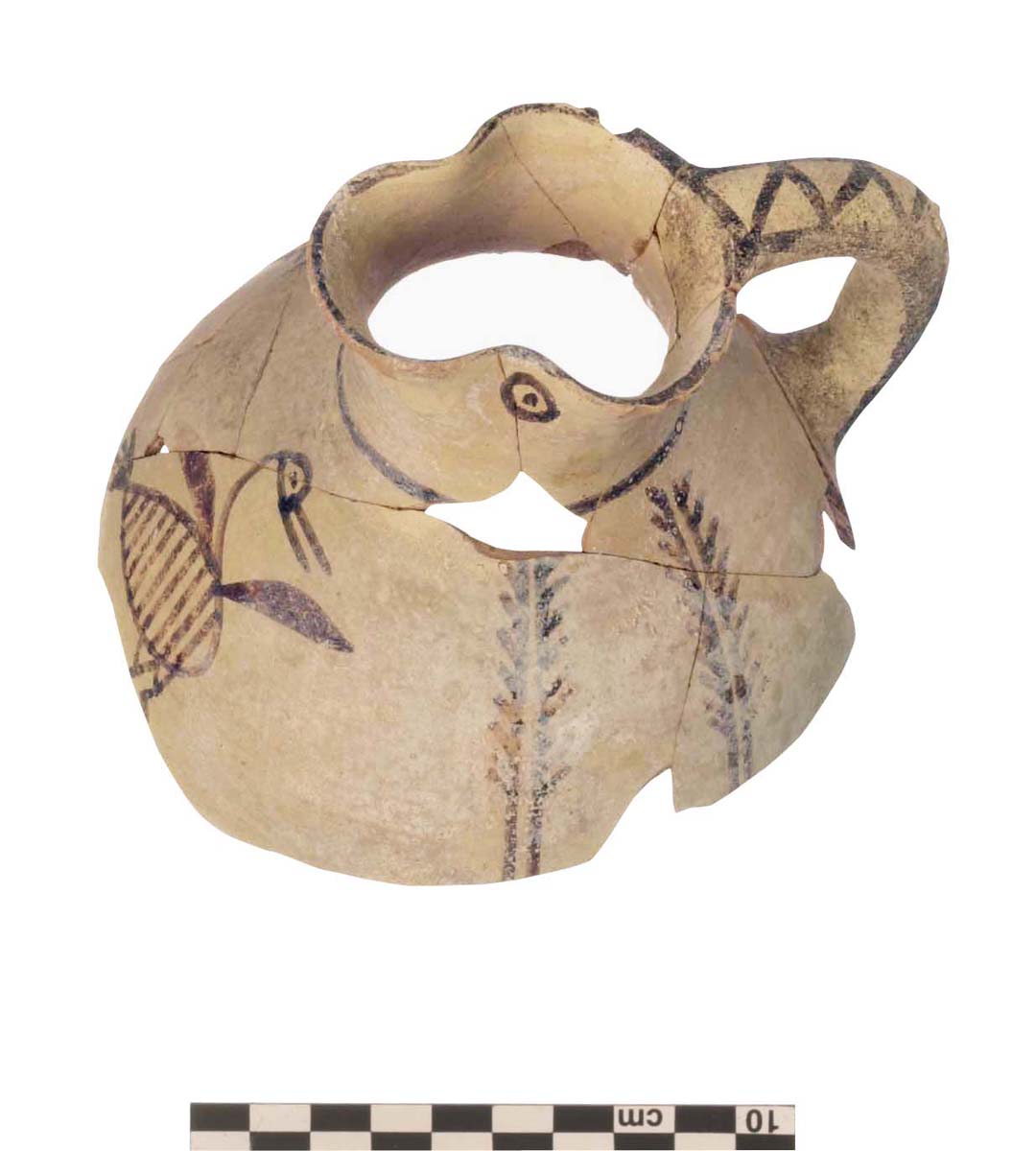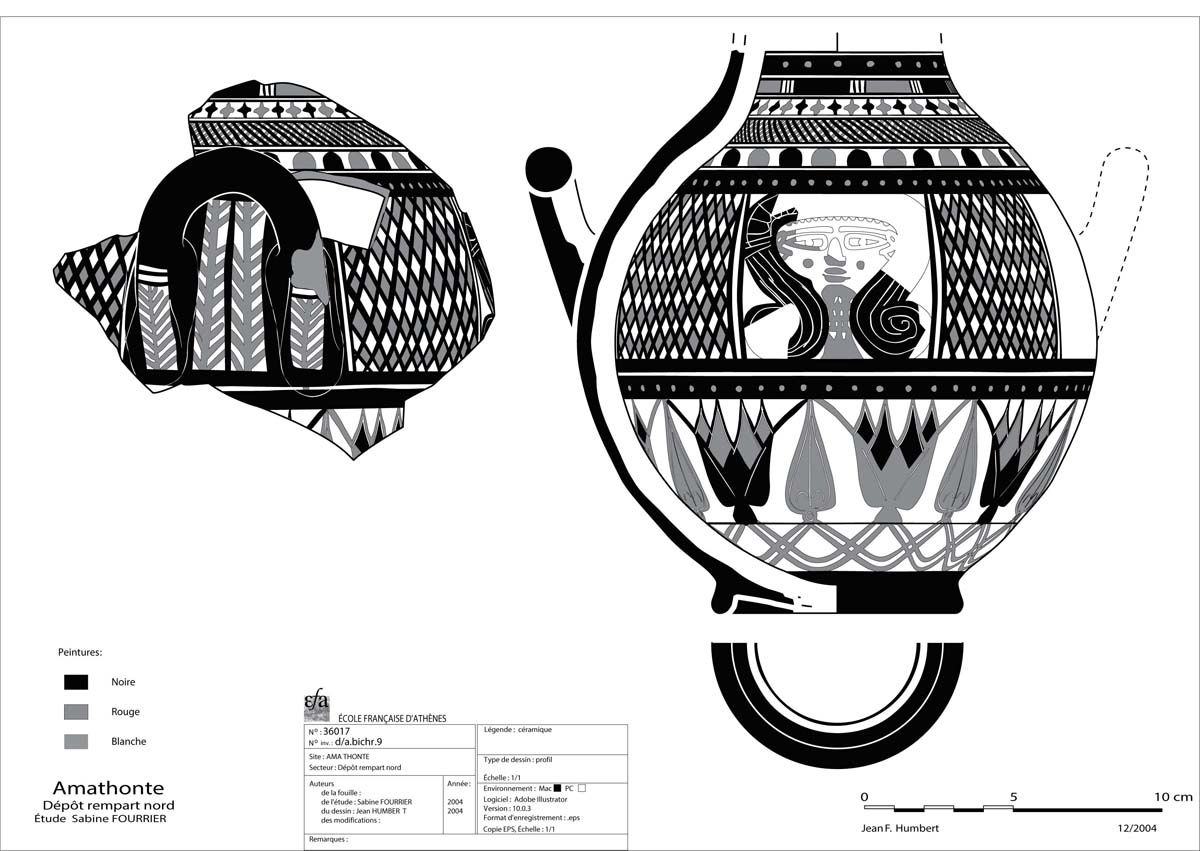A pronounced cosmopolitanism characterizes the city of Amathus from the Geometric period: along the road that joins the Levant to Greece, Amathus finds itself susceptible to the many influences that, with the passage of centuries, contribute to its cultural and artistic identity.

Grotto, Archaic amphora decorated with bulls and a syllabic inscription (Ph. Collet / Archives EFA, Y.1503; J. Humbert / Archives EFA, 28999)
Pottery, which constitutes the largest part of the excavation material, helps us to grasp this progress in its continuity and to draw out the key features. Along with the funerary material, which documents most of the Geometric products, the Archaic period adds in the great assemblages of the sanctuary of Aphrodite (the grotto and the bothros) and at the turn of the Classical period, the deposits at the West Terrace and the North wall, stemming from a palatial context. For the Classical period the royal palace provides the most documentation, as much in terms of local products as in terms of imports (fine pottery wares and amphorae material). The later phases (beginning of the Hellenistic period for the outer harbor; Hellenistic and Roman periods for the temple as well as the fortification zone) are just as well-documented even if they have been studied far less up until the present.

Bothros, Bichrome jug decorated with a bird (Ph. Collet / Archives EFA, N032-067)
The mission initiated several collaborative programs consecrated to the ceramics at Amathus, ranging from publication (some series have already been published, others are under study) to petrographical and physico-chemical analyses. The objective was to return to fabrication (ceramic craft industry), its organization and its gestures, starting from the commodities (vases) themselves. The analysis of pastes showed the common origin of most of the clay used by Amathus potters and enabled us to hone the criteria for distinguishing between the different local wares, ceramics imported from other centers on the island and goods originating from the Aegean islands and the Levant.

North wall, amphoriskos of the “Amathus style” (J. Humbert / Archives EFA, 36017)
The decoration techniques, some of which are characteristic of the Amathus workshops (“Amathusian Bichrome”, Black-on-Red “Blackened”) along with several series of wares, stylistically very original (jars with birds, vases in the “Amathus style”) testify to the existence, starting from the Geometric period, of the strong stylistic and cultural identity of Amathus whose influence stamped the entire kingdom.
A. Cannavò, trans. A.M. Schroth-Daskalakis
